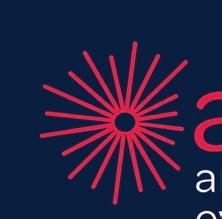
1 minute read
FARES
ridership increased by 22% compared from July 2022 to August 2022, and average weekday daily ridership increased by 19.9% in August compared to July.

e report also acknowledges the increase can’t only be attributed to the free rides.
“...transit trends and data are in uenced by seasonal factors, such as vacations and the resumption of the school year, in addition to persisting pandemic impacts and large scheduled events.” the report reads.
State Representatives Jennifer Bacon and Stephanie Vigil and State Senator Faith Winter introduced a bill this year that will allow that same grant to be used for any month that a transit agency designates as its “ozone season.”
Additionally, even with higher costs of driving, data provided by RTD shows that gas prices do not change ridership.
Laurie Hu , a spokesperson for RTD, wrote in an email that many factors a ect ridership, such as seasonality, weather, service levels and the opening of new lines.
She noted an increase in ridership in 2008 coincided with higher gas prices. However, ridership remained the same in 2014 when gas prices fell.
“RTD has been unable to attribute a direct correlation between gas prices and ridership (but) has seen just the opposite in some cases. On a longer-term basis, gas prices have e intensive care outpatient program is exible to work around the youth’s school schedule extra classroom and after-school activities. For more information about Behavioral Health & Wellness Outpatient Services Northwest, call 303-360-3736 or learn more at https://healthonecares.com/locations/healthone-behavioral-healthwellness-outpatient-services-northwest/. risen but overall ridership for transit agencies has trended downward,” she wrote.
One strong correlation they found is employment rates: as unemployment rises, ridership goes down, and vice versa.
Getting more riders, and money
If people live near transit and it’s accessible, they’re more likely to take it. According to Brian Welch, RTD’s acting assistant general manager of planning, the pandemic disproportionately impacted the use of public transportation.
“If you look at air travel, vehicle miles traveled, freight, even I think ocean cruises, almost everybody has gotten back to where they were before the global pandemic. Public transportation remains one of the outliers, so we’re still feeling the effects of this disruption,” he said.
One of those reasons is due to teleworking. Not as many people are taking long trips to work. Even before the pandemic, increases in ridership weren’t proportional to increases in population.
“If we have all these people moving into the Denver Metro area, ostensibly we’ve got people moving in who don’t want to drive,” he said. “We don’t seem to be attracting those people as frequently as we’d like to.”
For public transportation to be attractive, people need incentives to take it.
Welch said expensive parking charges, congestion, safety and competitive travel times up the value.





